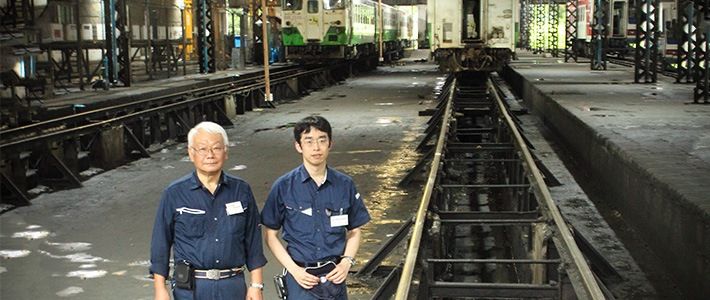
The Japanese Specialists Helping Modernize Myanmar’s Railways
Politics- English
- 日本語
- 简体字
- 繁體字
- Français
- Español
- العربية
- Русский
An Upgrade After 60 Years
Yangon Central Station, a major hub for Myanma Railways, does not look much different from when it was built in 1954. Four towers, reminiscent of Buddhist stupas, line up along the splendid three-story station building. At the same time, however, the wear of more than six decades is clear, and ticket sales and gates still rely on staff rather than machines.
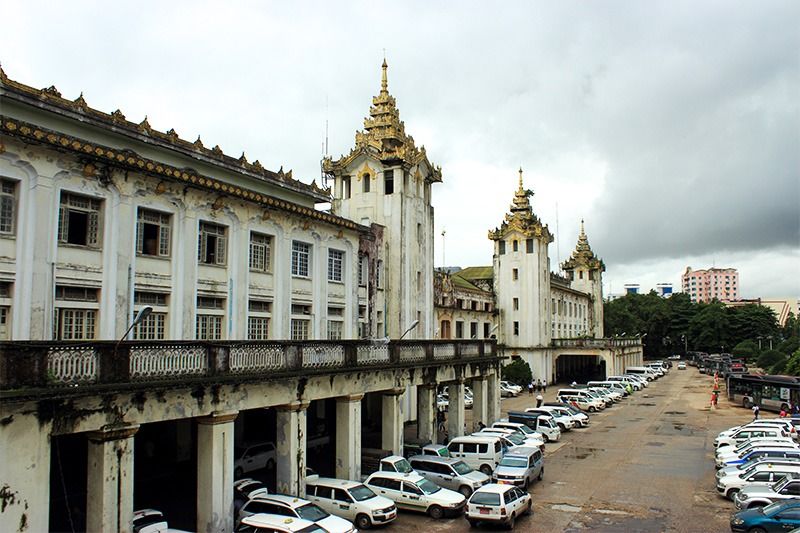 The Yangon Central Station building with its stupa-like towers.
The Yangon Central Station building with its stupa-like towers.
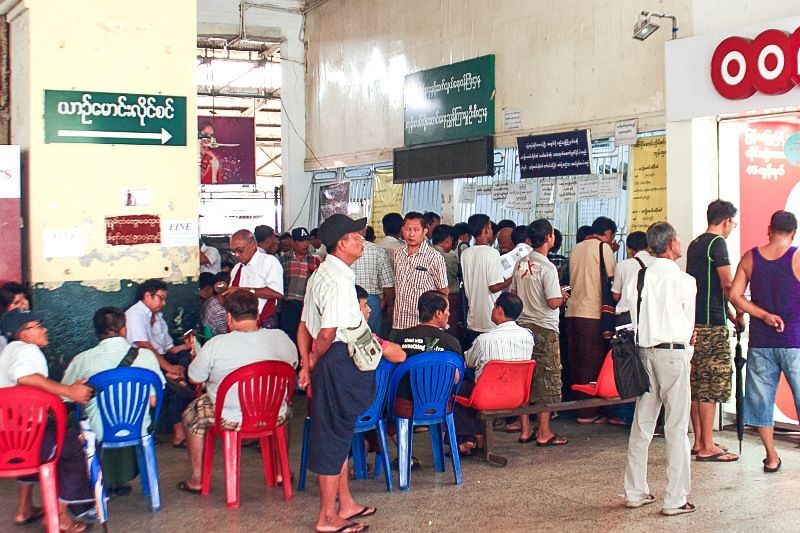 People line up for long-distance train tickets.
People line up for long-distance train tickets.
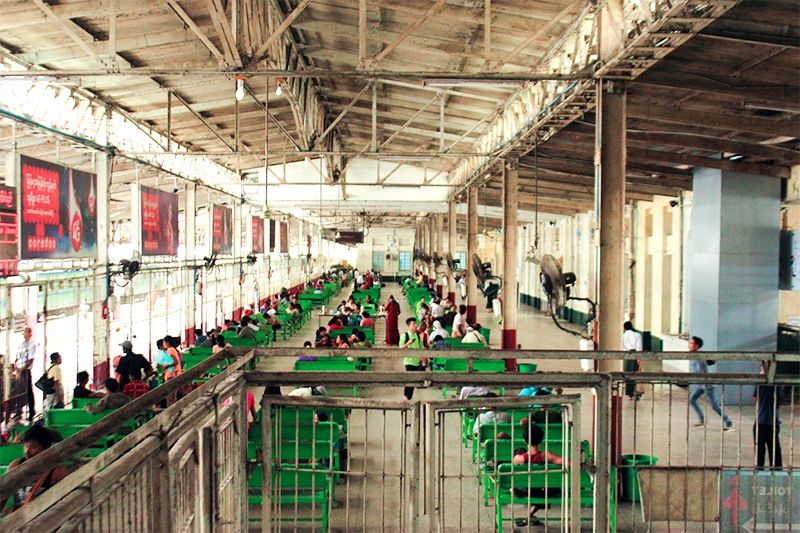 The long-distance passenger waiting room.
The long-distance passenger waiting room.
Time may appear to be standing still at Yangon Central, but Matsuo Nobuyuki, deputy general manager of Japan International Consultants for Transportation, identifies recent changes. “That’s a new point, installed with Japanese support,” he says, gesturing in the direction of the track. “If you take a good look around, you can see the kind of signaling equipment that’s common in Japan. All the systems in the station were upgraded through a Japanese grant, changing over on the night of May 26.”
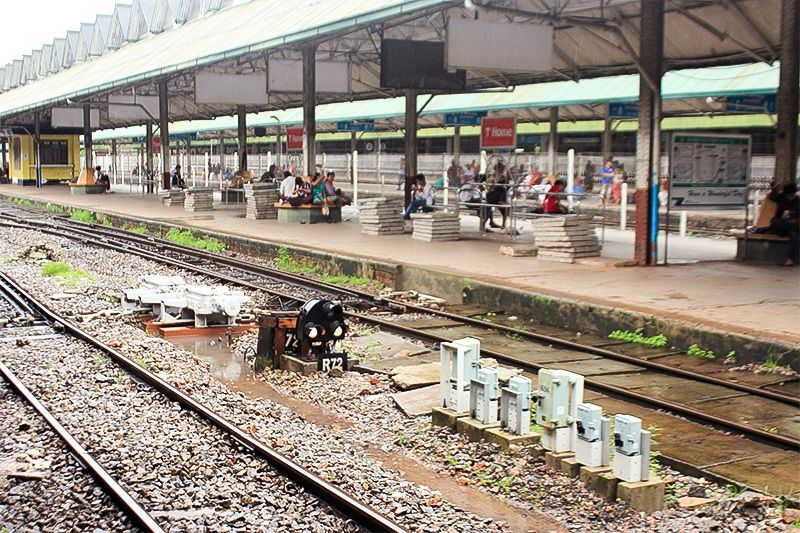 The new point here is part of the upgraded signaling system at Yangon Central Station.
The new point here is part of the upgraded signaling system at Yangon Central Station.
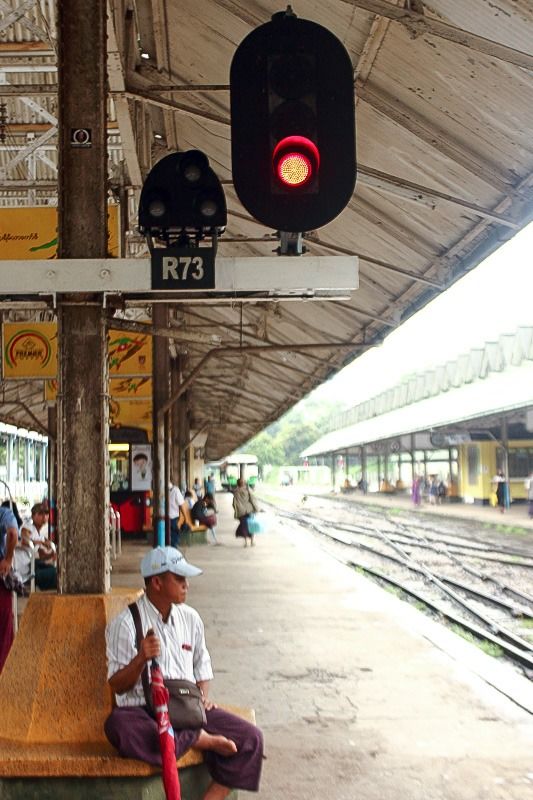 A new color-light signal attached to the old platform.
A new color-light signal attached to the old platform.
A huge system for adjusting points has just finished its active life. It remains in the former traffic control room on the third floor of the station building. Built by the British firm Westinghouse Brake and Signal Company, it has an array of dozens of levers. Zaw Myo Sann, a junior engineer for Myanma Railways, says, “There used to be four or five station workers lined up in front of the machine, following orders to move the levers by hand.” The levers sent electrical signals to move the points, which was cutting-edge technology 60 years ago. “It was so dilapidated,” he continues. “It took considerable effort to keep the electrical system working.”
Today, two station workers sit in front of a big liquid-crystal display, controlling the points by mouse. There are 81 points, around the same as large regional stations in Japan like Ōmiya or Sendai. Even if someone makes a mistake, the computer automatically prevents two vehicles entering the same section of track, thereby eliminating this kind of accident.
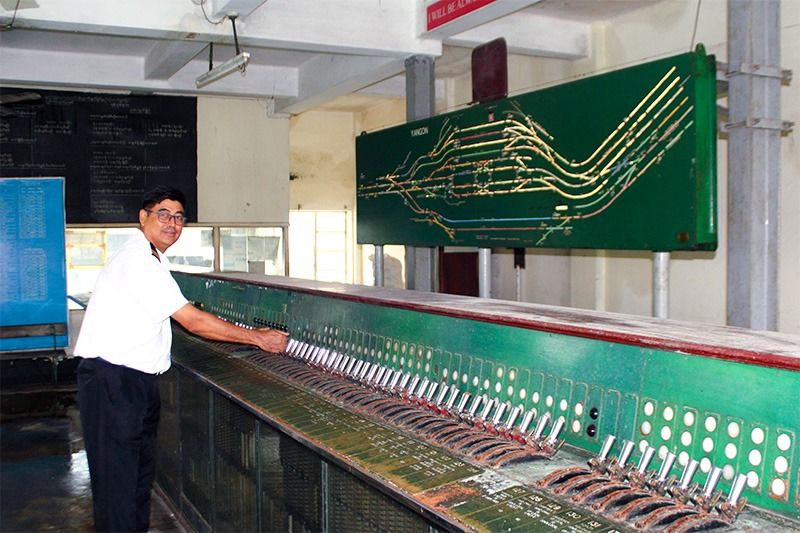 The complex control system has at last been retired after more than 60 years of service.
The complex control system has at last been retired after more than 60 years of service.
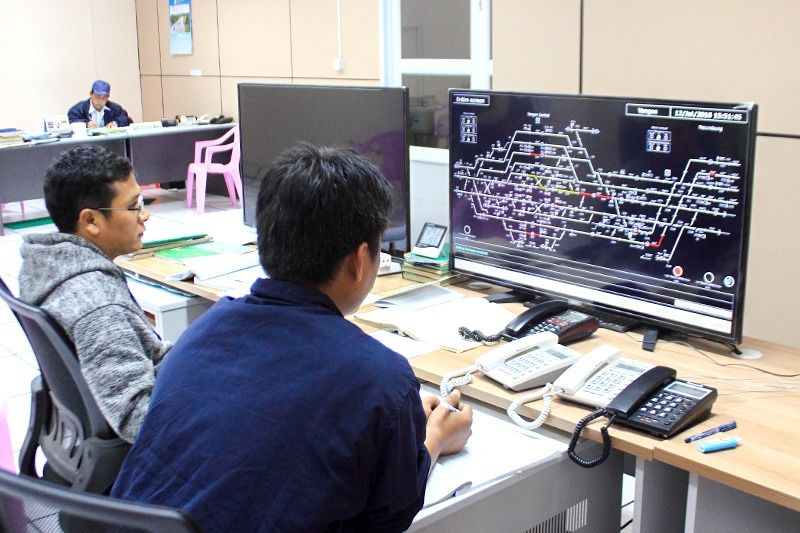 Station workers control the points by computer now.
Station workers control the points by computer now.
There is also a room where workers can use a simulator to master the system. Instructors can give repeated training on dealing with problems, making it the ideal place for new hires to learn. Matsuo says, “It’s not just about slotting in a new system. Japanese technical support always considers training for the people who will use it. These new machines will undoubtedly be installed at many other places across Myanmar, not just at Yangon Central.”
Tackling Myanmar’s Rail Crisis
Japanese financial and technical support for Myanmar’s railways has massively increased since the start of the country’s democratic reforms in 2011. Even before then, however, there were strong ties between railway workers in both countries.
Takamatsu Shigenobu is vice chairman of the Japan Myanmar Friendship Association. In 1982, when he was working at Japanese National Railways, he was sent to provide technical assistance to the equivalent organization in Myanmar (known as Burma until 1989). He says that after this he answered questions by letter for many years, but in 2003 a friend in Myanmar asked him to return.
Because the country’s military government was holding Aung San Suu Kyi—now national leader as State Counsellor—under house arrest, Western governments and Japan had halted economic and technical assistance. This meant the national railway service faced hard times and could not provide satisfactory service.
Takamatsu’s role in the friendship association allowed him to provide technical support in Myanmar as a volunteer. He looked into the possibility of bringing Japanese railway vehicles that were out of service to run on local lines. At 1,067 millimeters, Japan’s track gauge is a little wider than Myanmar’s 1,000 millimeters. Takamatsu first brought diesel engines over from Japan, next conducting research on how to modify them for Myanmar tracks at local railway plants. Success was followed by import to date of more than 300 diesel railcars and engines no longer in use in Japan.
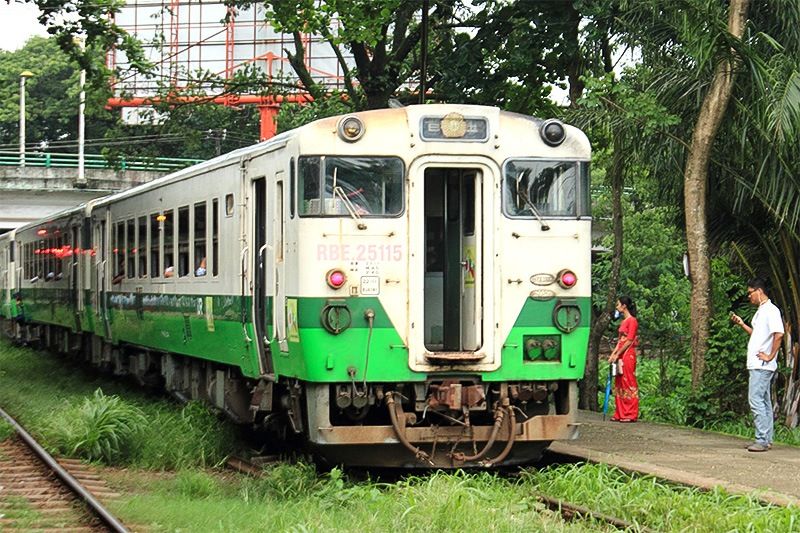 A Japanese railcar on the Yangon Central Railway.
A Japanese railcar on the Yangon Central Railway.
Takamatsu says, “I’ve spent many years getting to know railway workers and politicians in Myanmar, and I truly feel the excellence of the people of this country.” However, he added the following wish for the future. “Rail is an essential form of metropolitan transport, but overall Myanmar’s transport system is lacking. I think there needs to be a total rethink of future goals, taking into account urban planning issues.”
Keeping Rolling Stock Rolling
Alongside upgrades of the Yangon Central Railway, the rail system will benefit from the introduction of 66 new Japanese diesel/electric railcars to form six 11-carriage trains by 2020 at the earliest. Funded by a loan from the Japanese government, they are expected to have a major impact by speeding up rail travel.
One big issue will be regular inspection and maintenance of the new rolling stock, so it can be used long-term without breaking down. Japanese railway workers are providing technical guidance to ensure that this unflashy but essential task becomes standard practice.
The Insein Depot is located in northern Yangon. I am greeted there by Japanese consultants Kurosaki Yukio and Matsumoto Shigeo. Together with eight young locals selected as “innovation staff” from the depot’s 160 workers, they spend their days suggesting and testing a huge variety of improvements to the way people conduct their duties.
“We don’t just teach the way things are done in Japan,” says Kurosaki. “We have to begin with basic elements in line with the conditions here. Right now, we’re focusing our efforts on preventing the workplace from getting contaminated with oil, and working to stop rubbish and dust getting in. This is closely linked to the longevity of the railcars.”
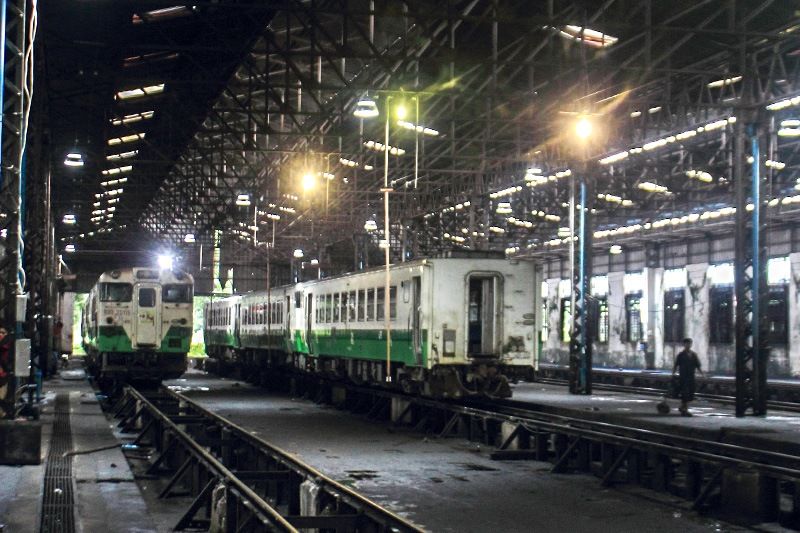 Insein Depot is quiet in the daytime when trains are running.
Insein Depot is quiet in the daytime when trains are running.
The depot was built at almost exactly the same period as Yangon Central Station, and so is more than 60 years old. Until recently, work was completed in the same longstanding casual manner, such as using a dipper to take lubricating oil from oil drums and pour it directly into the vehicles. This meant that the concrete floor of the depot was covered in oil. Also, during checks the pits under vehicles did not drain properly and remained full of water during rainy season. Even when the workers got drenched up to the waist, they took it as a normal part of the job.
Kurosaki’s group had the oil drums stored in another room, away from where people work. Now each time workers need to apply the oil to the vehicles they transfer it to separate containers brought it on carts and then use a pump. The pit drainage has been improved, and there are hand-crafted mops to keep them clear of water. The innovation staff members say that the cleaner workplace has brought a clear improvement in worker morale.
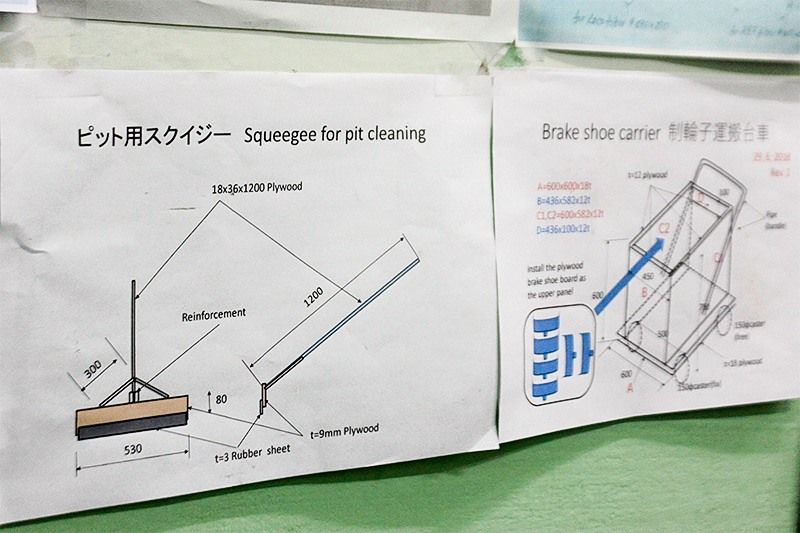 Designs for making depot equipment by hand are posted on the office wall.
Designs for making depot equipment by hand are posted on the office wall.
Sew Lwin Mun, the depot head, says, “Around 2000, Myanma Railways was at its lowest point. It was terrible—there weren’t even any parts available to repair vehicles. Now though, we are gradually seeing a future ahead. We have to master all the techniques we’re learning from our Japanese teachers and try to maintain the standards they set.”
(Originally published in Japanese on July 26, 2018. Reporting, text, and photography by Ishii Masato of Nippon.com. Banner photo: Matsumoto Shigeo and Kurosaki Yukio, who provide technical guidance to Myanma Railways at Insein Depot, pictured on July 13, 2018.)